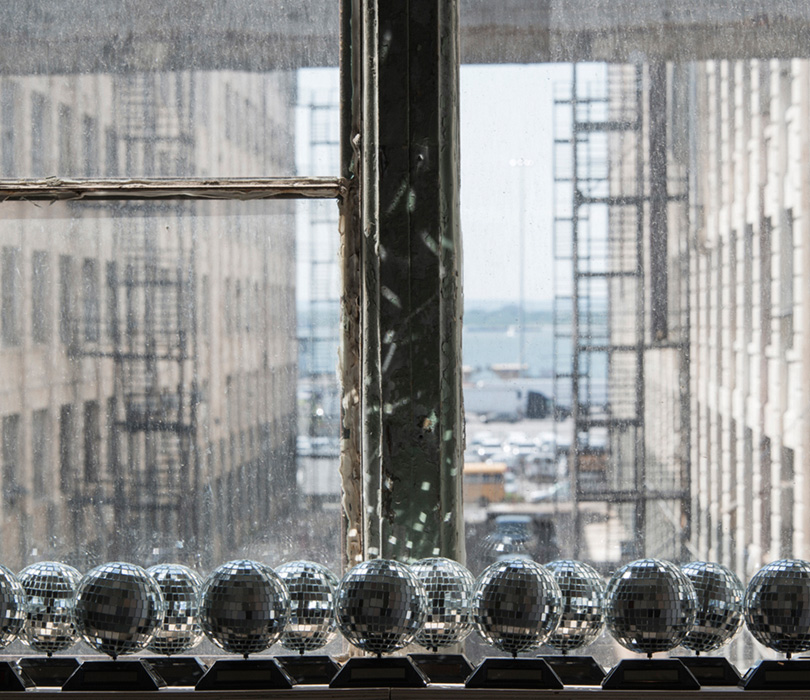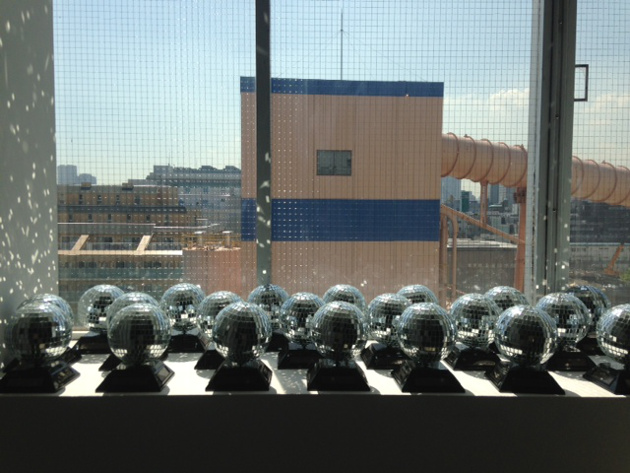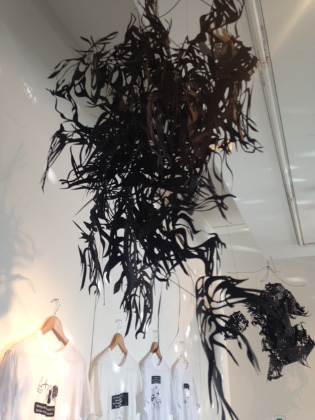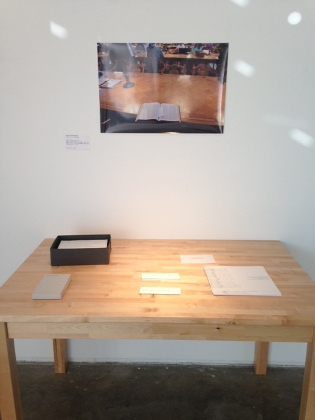
AI KOWADA GALLERY presents Takeshi Ikeda's solo exhibition "All Day Long".
Ikeda, an artist as well as a drummer in "core of bell", is currently living in N.Y. on an ACC scholarship. His performance there attracted keen attention from curators at famous museums and galleries. He is one of the most expected emerging artists.
His first solo show, after returning from NY, consists of works focused on the theme of music in Japanese society after the Tohoku earthquake and Tsunami.
Although they are about music, the works don't produce any music so that they bring the audience's attention to the absence of sound.Experiencing social intolerance to musical activity in Japan after the disaster, Ikeda refers to John Milton Cage Jr., and Fluxus, a 60's American experimental music movement in search of new ways to create and appreciate music.
In his new theme, he attempts to expand the possibilities of the music by dealing with it not merely as sound or performance.
"All Day Long", the main piece of work at this show is a mirror ball operated by sunlight. The mirror ball, usually a feature at clubs and discos, in this case works only during the day instead. Ikeda calls it "a piece of music automatically performed" by the natural cycle of day and night. He considers this silent work as a piece of music, because it is his new definition of music experienced through time and space. You don't actually pass through but you do in your imagination inspired by what you see or hear.
This new type of music can be defined as temporal art, he believes. It can be achieved because of his unique ability as an artist as well as a musician. We look forward to seeing you at the exhibition.
---------------------------------------------------------------------
I think that 60s experimental music like that of Fluxus or New York School musicians found a possibility of taking things other than sound into music. However, few of those artists searched more deeply into the vast possibility that they found. Actually these musical experiments were conducted in the small scene of Japanese experimental music. I was also influenced by them.
The idea that I learned from their music and examine in this performance of mine is about 'sign.' In their music, which involves few sounds and long compositions, I noticed that what I was most conscious of was the 'signs' between audience & players. And I felt that the presence or meaning of these signs changed while the music was playing. Then I developed the idea to present music itself as a 'sign.'
Fortunately, in Japanese horror movie scenes, there are various & practical expressions which we may call the science of 'signs' of ghosts. And since I was a great fan of those movies, I considered being affected to be positive for me. Of course, a true ghost cannot be used. But a player can be treated like a ghost. In my performance, on the basis of the simple directions I give, the signs of players who are out of sight of the audience change with time. I present this activity as a kind of music.
I hope that the improvisatorial & ceremonial quality of the work, in which the musicians are like ghosts, will open a new aspect of experimental music.
2013 Takeshi Ikeda
INSTALLATION VIEW


